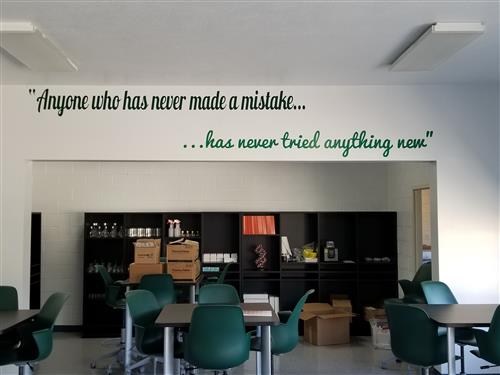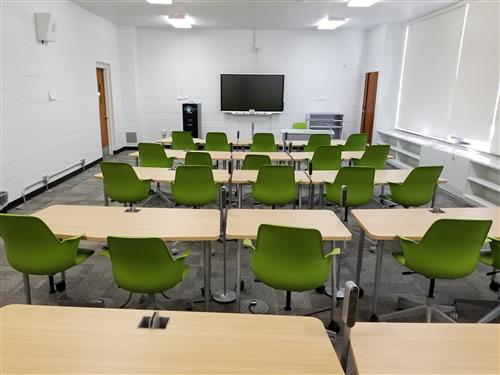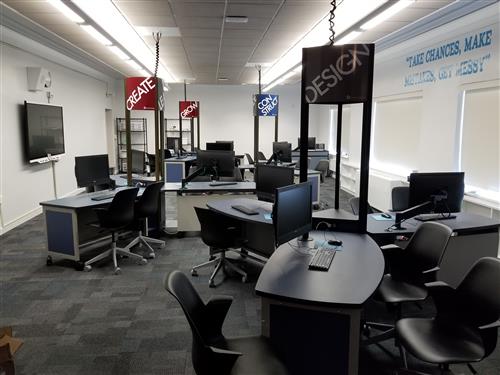STEM Innovation Academy of the Oranges
445 Scotland Road South Orange, NJ 07079
Language
Users
- STEM Innovation Academy of the Oranges
- Active Learning Spaces
Programs & Services
Page Navigation
-
Active Learning Spaces
 The shift from passive to active learning creates a need to support the integration of pedagogy, technology, and space. Our classrooms reflect an active learning ecosystem that offers a range of settings and the choice and control to select the best environment for the learning; while considering options for adjacency, visual and acoustic privacy, and collaboration. This includes 3 instructional modes: computer work (focused work environments), talk with others (collaborative environments), making something (hands-on project work environments). Collectively, these environments offer
The shift from passive to active learning creates a need to support the integration of pedagogy, technology, and space. Our classrooms reflect an active learning ecosystem that offers a range of settings and the choice and control to select the best environment for the learning; while considering options for adjacency, visual and acoustic privacy, and collaboration. This includes 3 instructional modes: computer work (focused work environments), talk with others (collaborative environments), making something (hands-on project work environments). Collectively, these environments offer - Dynamic movement
- Interchangeable configurations
- A mixture of specialized spaces: makers’ spaces, engineering, digital design, etc.
- And zero distance design
- Height-adjustable worktables and rolling chairs
- Furnished alcoves, and corridors
- White board walls





